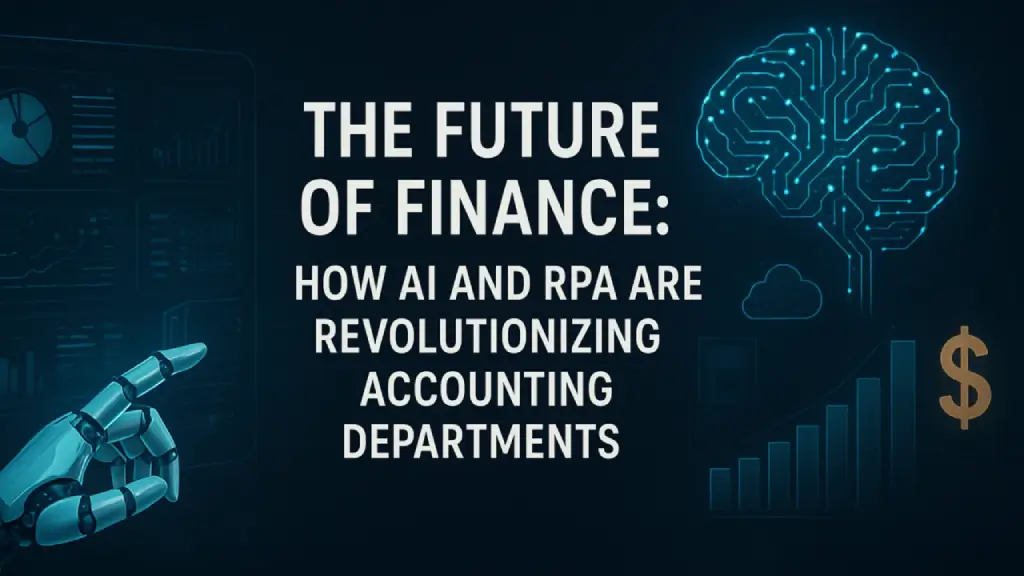Loading content...
- Software DevelopmentIT Consulting & DesignAI & Data SolutionsQuality AssuranceTeam & Resource SupportBusiness Support Services
Imagine a monthly close that finishes in days instead of weeks — powered by AI-driven reconciliations, RPA automation, and cloud dashboards. Learn how finance teams can reduce cycle times, tighten controls, and free staff for higher-value work while achieving measurable ROI.
RPA and AI shorten monthly close cycles by up to 70%, accelerating decision-making and cash flow visibility.
AI-driven anomaly detection and governance frameworks reduce errors by more than 80%, strengthening oversight and compliance.
Cloud ERPs and hyper-automation enable up to 90% of repetitive finance processes to be automated, scaling operations efficiently.
Loading content...
Let's discuss your project and create a custom web application that drives your business forward. Get started with a free consultation today.

Imagine a monthly close that finishes in days instead of weeks — not because someone worked weekends, but because bots validated invoices, AI reconciled accounts, and cloud dashboards highlighted exceptions in real time. That future is not sci-fi, it’s happening now as finance teams adopt AI in finance and RPA to shift from number-crunching to strategic advising. Financial-services AI spending is forecast to climb to $97 billion by 2027 at a 29.6% CAGR , a sign that the stakes — and the rewards — are big.
I once spoke with a CFO who described automation as “the difference between firefighting and forecasting.” This post is a practical playbook for leaders who want that shift: what technologies matter, how to sequence investments, where risk and governance bite, and the measurable outcomes you can expect. You’ll get tactical guidance, real industry signals, and concrete metrics drawn from recent research — plus soft CTAs for how Moltech Solutions Inc. can help turn strategy into measurable ROI.
Read on to learn how to reduce cycle times, tighten controls, and free your team for higher-value work.
AI in finance is less about novelty and more about preserving competitiveness. Technology transformation ranks as the highest CFO priority for the next three years, yet 72% of finance leaders cite legacy back-office behaviors as a barrier, and only 14% are actively reshaping finance functions with new tech.
In practice, this gap means organizations that act will gain faster closes, better forecasting, and lower operational cost, those that delay face slower decision cycles and higher compliance risk.
A treasury dashboard that uses cloud ERP to get bank feeds, machine learning to highlight unusual payments, natural language processing to summarize possible fraud instances for a human reviewer, and robotic process automation to start a remedial procedure. This cuts down on mistakes and speeds up response times.
Step 1 — Define outcomes, not tools: Start with where you need impact (faster close, better forecasting, reduced DSO) and map back to processes.
Step 2 — Quick wins and scale paths: Pilot RPA on high-volume, low-exception tasks, layer AI for anomaly detection as data quality improves
Step 3 — Workforce reskilling: Blend finance domain skills with data literacy, shift roles toward analysis, not data entry
Step 4 — Governance and explainability:Adopt Explainable AI models and clear audit trails to satisfy regulators and internal audit teams.
Data privacy and model bias are real concerns. Governance frameworks should include model validation, regular bias testing, and human-in-the-loop approval for high-impact decisions. Collaboration with legal, risk, and compliance is non-negotiable — reducing rollout delays and regulatory friction.
Tip: Use Lean or Six Sigma to standardize processes before automation, standardization reduces exceptions and accelerates bot stability. Learn how our team helps design pilot-to-scale roadmaps that map to measurable KPIs.
Make an executive-level ROI story by linking these to P&L results, such as decreased overhead, faster deal diligence, or better working capital.
Note : By 2025, 78% of banks had tried generative AI, but only 8% had fully adopted it across their organizations. This shows that testing is common, but scaling is where the value comes in
AI in finance and RPA are no longer optional experiments, they’re strategic levers that change how finance teams operate, advise, and compete. The research is clear: investments are accelerating, the technology stack is proven, and the payoff — shorter cycle times, better forecasting, lower operational risk — is tangible when programs are well-governed and workforce-ready (Provided Research).
If your team is ready to move from pilots to scalable impact, Moltech Solutions Inc. helps build the roadmap, define governance guardrails, and train your people for lasting change.
Schedule a free consultation with our finance automation team to review a tailored pilot plan and KPI-based ROI case.
Let's connect and discuss your project. We're here to help bring your vision to life!